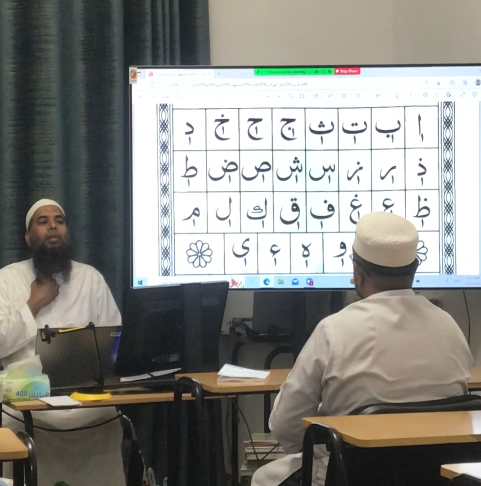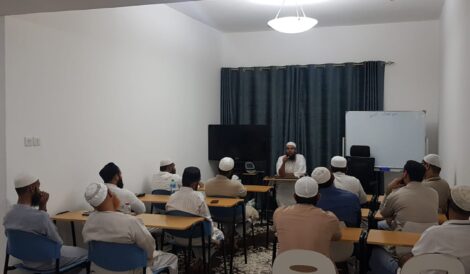Congratulations! You’ve decided to learn Arabic. This is a challenging but rewarding endeavor. Arabic is the sixth most spoken language in the world, with nearly 420 million people speaking it worldwide. Learning a new language is always a big undertaking, but when the new language doesn’t share a root with your native tongue, it’s even more difficult.
With any new language, there are keys to success in becoming fluent. You learn vocabulary, verb conjugation, grammar, sentence structure, and then practice, practice, practice. You immerse yourself in the new language. You watch movies and listen to music in the new language, speak it as well as you can as often as you can, and seek out native speakers and converse with them. Before long, you’ll have a working understanding and beginning fluidity in the new language.
Or at least that’s the idea. However, Arabic can present some unique challenges for native English speakers that can slow the learning process down. For example:
- Arabic uses a completely new alphabet.
- There is almost no shared vocabulary between Arabic and Latin-based languages. Every single word you learn is a new word.
- Arabic is a highly inflectional tongue. Subject, tense, and mood are communicated by how you inflect your tone.
- There are ten usual verb patterns, and students must memorize the conjugation and vocalization for the active and passive voices.
- Plurals and their agreements with numbers are more difficult and complex than what we are used to in English.
- Arabic is foreign to English speakers in every sense of the word.
Sounds a little tough, doesn’t it?
Thankfully, there are steps that anyone can take to make the learning conversational Arabic easier. It will take hard work, dedication, and time, but it’s certainly achievable.
Step 1. Decide which form of Arabic you want to learn
There are many types of Arabic. It is the mother tongue and official language of nearly 30 countries in the middle east and northern Africa. There are different accents and a variety of local pronunciations. If you’re planning to spend time in one area, you’ll want to choose the variation that pertains to that region.
One such example is Egyptian Colloquial Arabic, which is the most widespread regional Arabic dialect and is most often used in television and movies.
However, brand new students should also consider Modern Standard Arabic, the official language of 22 Arab countries and one of the official languages of the United Nations.
Step 2. Start with the basics
It’s easy to fall into the trap of trying to learn Arabic by transcribing words instead of learning the Arabic alphabet first. Think about how we learned English back in school. First, you learn your letters, then you form those letters into words, then you learn how to form sentences, and then you learn more about proper syntax and grammar. Taking shortcuts will only slow you down.
Step 3. Learn to use the Arabic dictionary
This task is not as easy as it sounds. In an Arabic dictionary, words are generally organized around three-letter roots. To look up a word, you need to know what the root is and what letter the root starts with – which is not necessarily the first letter in the word. Using the dictionary takes practice, but the sooner you learn it the better. It will make the entire process easier and more enjoyable.
Step 4. Immerse yourself in study and practice
This is a critical step in learning any language, but doubly so when learning Arabic. The best way to learn a new word is to see it, hear it, write it and speak it, so combine those activities as much as you can.
One way for beginners to practice a foreign language is to watch children’s television programs in that language. The vocabulary is simpler, and the educational nature of those programs can be extremely helpful to new students of any age. As you gain proficiency, another tactic is to watch movies in the foreign language with English subtitles on. That way you gain a better “ear” for listening, and the subtitles give you the translation for what you’re hearing. Eventually you’ll be able to switch off the subtitles and still understanding what is being said.
Step 5. Speak the language
Seeing and hearing isn’t enough, however. It’s critical that you converse in Arabic with other people. It can be difficult to find a conversational partner if you’re not acquainted with native Arabic speakers. Thankfully, modern technology can do a lot to solve that problem.
There are many groups for students of Arabic online, and it’s become much easier to find tutors who will coach you and help you in your studies. Take advantage of these resources. The more you practice, the faster you will learn.
Step 6. Never stop learning
These steps are just the beginning. It’s easy to begin the journey of learning Arabic, but challenging to see it through. Mastering the language will require years of study, but gaining conversation skills can come quickly if you dedicate yourself to the pursuit.
Ready to dip your toes in the water? Try out a free lesson. We’ll be glad to help you take your first steps so you can learn to speak Arabic online.
And good luck! Or as you will be saying after learning the language, bit-tawfīq!




You might want to review some Dummy Text generation which contains words and even sentences with a meaning and that should not suppose to happen
It really a great article for blogger as a beginner, intermediate or advanced level. I especially liked the part about Using Images Effectively.